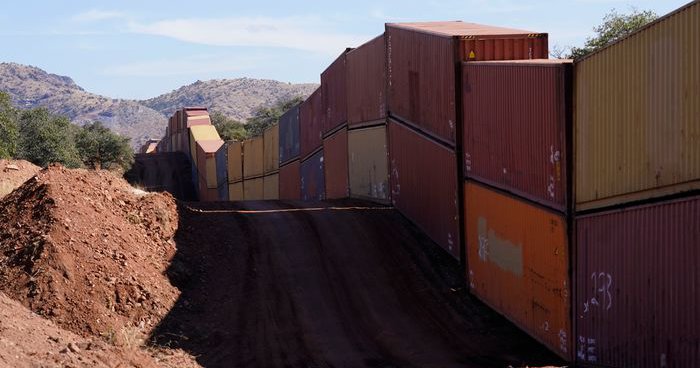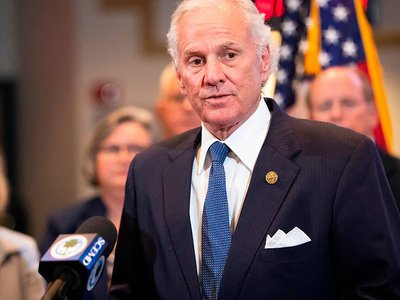Arizona Governor Doug Ducey has had hundreds of double-stacked shipping containers topped with razor wire placed on the state’s border with Mexico in a final effort to secure the boundary before he leaves office.
However, work on the container wall has paused in recent days in response to protests from environmental activists and objections by the federal government, according to the Associated Press.
Federal agencies, including the Bureau of Reclamation and the U.S. Forest Service, have told Arizona the construction on U.S. land is unlawful and it must stop. In response, Ducey sued federal officials on October 21. The outgoing governor has argued the state holds sole or shared jurisdiction over the 60-foot area at the state’s remote eastern border with Mexico. He said the state has a constitutional right to protect residents from “imminent danger of criminal and humanitarian crises.”
“Arizona is going to do the job that Joe Biden refuses to do — secure the border in any way we can.” Ducey said in announcing the lawsuit last month. “We’re not backing down.”
Environmentalists have warned the containers could harm natural water systems and endanger species, while Governor-elect Katie Hobbs, a Democrat, called the containers a waste of resources and has suggested the containers could possibly be repurposed as affordable housing.
Environmental activists stood in front of construction vehicles last week, stopping work at the site of container wall construction in Cochise County.
Ducey’s border wall project began this summer in Yuma, a popular crossing point where containers filled gaps in former president Donald Trump’s border wall. Now, crews have begun focusing on San Rafael Valley, an area of the border that does not see many border crossings, according to the Associated Press.
The initial project in Yuma cost roughly $6 million and included 11 days of work erecting 130 containers to secure some 3,800 feet.
The new work, which will use up to 3,000 containers to secure 10 miles in Cochise County, is costing the state $95 million. The new wall has gaps of several hundred yards in some areas due to steep terrain.
Ducey argues the container wall is necessary as the U.S. sees a record influx of illegal immigrants crossing the border. U.S. border officials recorded 2.38 million migrant encounters at the border last fiscal year, a 37 percent increase from the year before.







